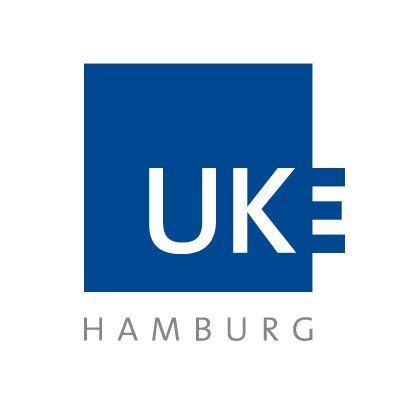预约演示
更新于:2025-12-04
Zinc chloride
氯化锌
更新于:2025-12-04
概要
基本信息
原研机构 |
在研机构 |
非在研机构- |
权益机构- |
最高研发阶段批准上市 |
首次获批日期 美国 (1986-06-26), |
最高研发阶段(中国)- |
特殊审评- |
登录后查看时间轴
结构/序列
分子式Cl2Zn |
InChIKeyJIAARYAFYJHUJI-UHFFFAOYSA-L |
CAS号7646-85-7 |
关联
80
项与 氯化锌 相关的临床试验CTRI/2025/03/083084
Effectiveness of Vitamin-C and Zinc combination in treatment of Primary Dysmenorrhea- A Randomized, double-blind, Placebo controlled study. - nil
开始日期2025-03-31 |
申办/合作机构- |
DRKS00035588
The influence of a zinc lactate-containing mouthwash on intraoral colonization with Porphyromonas gingivalis, Tannerella forsythia, and Treponema denticola
开始日期2024-12-05 |
CTRI/2024/02/062872
Effect of zinc chloride mouthwash on oral mucositis in cancer patients undergoing chemotherapy- a randomized clinical trial - nil
开始日期2024-03-05 |
申办/合作机构- |
100 项与 氯化锌 相关的临床结果
登录后查看更多信息
100 项与 氯化锌 相关的转化医学
登录后查看更多信息
100 项与 氯化锌 相关的专利(医药)
登录后查看更多信息
26,139
项与 氯化锌 相关的文献(医药)2025-12-31·SCIENCE AND TECHNOLOGY OF ADVANCED MATERIALS
Enhancement of photocatalytic efficiency of copper oxide/zinc oxide-montmorillonite photocatalyst under visible light irradiation
Article
作者: Khaorapapong, Nithima ; Suppaso, Chomponoot ; Yamauchi, Yusuke ; Pongkan, Nipaporn ; Baoulan, Areebhorn ; Rattanawongsa, Wachiraya ; Asakura, Yusuke ; Intachai, Sonchai
The formation of copper oxide and zinc oxide mixture in montmorillonite was conducted by the reaction of an aqueous dispersion of Cu2+/Zn2+ exchanged montmorillonite and an aqueous solution of sodium hydroxide under hydrothermal treatment. The resulting product was characterized by X-ray diffraction, scanning and transmittance electron microscopies, as well as UV-visible and photoluminescence spectroscopies. The diffuse reflectance absorption spectra showed the absorption onsets due to copper oxide (885 nm) and zinc oxide (310 and 580 nm) in the product. The adsorption of methylene blue was fitted well by the Langmuir model with the maximum adsorption capacity of 454 mg⋅g-1. The thermodynamic studies revealed that the process is exothermic and spontaneous. The photocatalytic activity of the hybrid was assessed by the degradation of methylene blue in aqueous solution under visible light irradiation. The most active species in the photocatalytic process was hydroxyl radicals. The regenerated copper oxide/zinc oxide-montmorillonite was reused up to 5 cycles, the photodegradation efficiency dropped only 5% (from 94% to 89%), supporting the good stability of the photocatalyst. The result was in agreement with the advantages of the nanocomposite heterostructure and the unique nature of montmorillonite.
2025-12-01·SEPARATION AND PURIFICATION TECHNOLOGY
Metal-free protic ionic liquids as catalysts: High-yield synthesis of cyclic carbonates from CO2 without high pressure and temperature
作者: Zhai, Yang ; Gong, Zhen ; Fang, Yucheng ; Ma, Songqi ; Xu, Yun ; Wang, Donglei ; Peng, Yujie ; Wei, Zhihan ; Jiang, Tao
A series of protic ionic liquids (PILs) were synthesized using inexpensive amine and acid materials, and their d., viscosity, and thermal properties were investigated.The PILs exhibited excellent CO2 absorption capacity and efficient catalytic activity for the coupling of epoxides and CO2, without the need for any metal catalyst and solvent.These reactions were carried out under mild conditions, including mild temperature, short reaction time, and ambient pressure.The thermal stability of all the PILs was found to be good at temperatures up to 373.2 K.The rate constants were determined as a function of reaction temperature in the range of 303.2-333.2 K, and the activation energy was calculated to be 92.6 kJ.mol-1.The kinetic equation for the synthesis of butylene carbonate catalyzed by [DMEDAH][Prop]/[DBUH]Br was also obtained.Furthermore, [DMEDAH][Prop]/[DBUH]Br maintained its efficient catalytic activity even after five cycles.A possible mechanism for the synthesis of cyclic carbonates from CO2 and epoxides was also proposed.
2025-12-01·Nano-Micro Letters
NH4+-Modulated Cathodic Interfacial Spatial Charge Redistribution for High-Performance Dual-Ion Capacitors
Article
作者: Liu, Mingxian ; Gan, Lihua ; Song, Ziyang ; Chen, Yumin ; Lv, Yaokang
Abstract:
Compared with Zn2+, the current mainly reported charge carrier for zinc hybrid capacitors, small-hydrated-sized and light-weight NH4+ is expected as a better one to mediate cathodic interfacial electrochemical behaviors, yet has not been unraveled. Here we propose an NH4+-modulated cationic solvation strategy to optimize cathodic spatial charge distribution and achieve dynamic Zn2+/NH4+ co-storage for boosting Zinc hybrid capacitors. Owing to the hierarchical cationic solvated structure in hybrid Zn(CF3SO3)2–NH4CF3SO3 electrolyte, high-reactive Zn2+ and small-hydrate-sized NH4(H2O)4+ induce cathodic interfacial Helmholtz plane reconfiguration, thus effectively enhancing the spatial charge density to activate 20% capacity enhancement. Furthermore, cathodic interfacial adsorbed hydrated NH4+ ions afford high-kinetics and ultrastable C‧‧‧H (NH4+) charge storage process due to a much lower desolvation energy barrier compared with heavy and rigid Zn(H2O)62+ (5.81 vs. 14.90 eV). Consequently, physical uptake and multielectron redox of Zn2+/NH4+ in carbon cathode enable the zinc capacitor to deliver high capacity (240 mAh g−1 at 0.5 A g−1), large-current tolerance (130 mAh g−1 at 50 A g−1) and ultralong lifespan (400,000 cycles). This study gives new insights into the design of cathode–electrolyte interfaces toward advanced zinc-based energy storage.
114
项与 氯化锌 相关的新闻(医药)2025-11-06
·赛柏蓝
作者 | 晓琳
编辑 | 郑瑶
人血白蛋白市场,百洋医药签下十年长约。
01
10年之约,百洋医药押注人血白蛋白
近日,青岛百洋医药股份有限公司(以下简称“百洋医药”)发布公告称,已获得杰特贝林(亚太区)有限公司旗下产品“安博美®”(人血白蛋白)在中国大陆(不含香港、 澳门以及台湾地区)特定市场的独家推广、销售及经销权。
与百洋医药签约的是杰特贝林亚太全资子公司广州市君信药业有限公司,其负责杰特贝林亚太在中国的销售运营工作,合同有效期为2025年11月4日-2035年6月30日。
这份长达十年的合约,也对业绩表现提出了要求:百洋医药须在前三年完成约定的最低采购量,如未完成,君信将享有协议约定的权利。
双方的合作基础早在2021年就已奠定,自2021年3月百洋医药与杰特贝林就安博美®的零售市场开始开展合作,本次签署《经销协议》,是将合作市场拓展至区域内特定的零售市场、广阔市场、医院市场(君信提供清单的除外)。
此次合作围绕的人血白蛋白并非普通药品,而是一个临床应用广泛、需求量大、且存在高竞争壁垒的产品,其主要应用于肝硬化、肾病综合征、严重烧伤、感染性疾病以及大型手术后的液体复苏。
药智数据显示,2016年-2025年上半年,人血白蛋白在国内公立医疗机构累计销售额达1751亿元,位居药品销售榜第一(排名第二的氯化钠注射液累计销售额为1528亿元)。另外,人血白蛋白市场长期呈现进口主导格局,2024年批签发进口产品同比增长约17%,占比近七成。
杰特贝林拥有全球最大的血浆收集网络之一CSL Plasma,自1986年就开始为中国患者提供人血白蛋白,已成为中国市场的主要供应商之一,产品占比高达近24%,领跑进口品牌。
这份十年协议对于百洋医药来说,显然是一个商业机遇。此前,百洋医药也表示,未来将进一步聚焦创新药和高值器械的商业化以及在肿瘤、放疗领域持续增加资源投入。
全球生物技术巨头、血液制品领导者杰特贝林,为何再度选择百洋医药?
这份合作或许建立在百洋医药强大的品牌运营基本盘之上。
2025年上半年,迪巧系列营收9.50亿元,已连续9年稳居进口钙市场榜首;玻璃酸钠滴眼液海露营收3.76亿元,同比增长14.86%;“抗肝纤维化品类第一品牌”扶正化瘀营收3.71亿元,同比增长37.42%;纽特舒玛系列产品营收0.78亿元,同比增长34.83%。
赛柏蓝获悉,百洋医药在肿瘤、放疗领域的持续投入以及多年在抗肝纤维化领域的既有优势,恰好能与安博美®的应用场景形成协同。百洋医药亦表示,肝病治疗作为双方的战略疾病领域,本次合作可以更好地为肝病患者提供有价值的综合治疗解决方案。
此外,创新药领域,百洋医药还获得了北京华昊中天生物全新一代微管抑制剂化疗药物优替德隆、中国首个自主创新研制的核医学创新药99mTc-3PRGD2以及中山莱博瑞辰生物一款治疗骨坏死的全球首创创新药RAB001等中国大陆地区商业化权益。
02
“中国药王”市场格局隐秘生变
从近十年市场表现来看,2024年开始人血白蛋白公立医院市场增速有所放缓。
在国内公立医疗机构市场,人血白蛋白每年的销售额从2016年的103亿元一路升至2023年的270亿元,2024年回落至232亿。
国药旗下的天坛生物,2025年上半年人血白蛋白营收虽同比增长20.79%至13.45亿元,但成本大幅增加50.40%,毛利率下降11.61%。值得注意的是,人血白蛋白营收占天坛生物总营收的43%左右,这直接反映在了其扣非归母净利润出现了4.54%的下滑。
天坛生物称,一方面,材料成本和人工成本存在上升压力;一方面随着药品集采常态化推进、部分省级和省际联盟对血液制品集采范围的扩容,叠加进口人血白蛋白批签发数量的持续增加,市场竞争加剧。
华润医药旗下的博雅生物,2025年上半年销售量同样不容乐观,批签发下降4.61%。
除集采扩围导致毛利率下降这一因素,博雅生物称,一方面,临床重点应用场景收缩、处方量减少;另一方面,市场出现供大于求局面,这其中非血液制品领域企业加速布局,如禾元生物重组人血白蛋白、正大天晴重组人凝血因子Ⅶa等产品先后获批上市,对传统人源性血液制品临床应用的市场空间可能形成挤压。
如禾元生物的重组人血白蛋白虽目前只有用于肝硬化低白蛋白血症(≤30g/L)治疗的一个适应症,但其“稻米造血”技术一旦量产,成本会大幅下降。禾元生物表示,预计2026年产能能达到120万吨。产能提高后,很可能因产量提高导致价格下降,进一步影响市场格局。
此外,同样拥有人血白蛋白的上海莱士与派林生物,2025年上半年营收和扣非归母净利润也出现了双双下降的情况。
即便人血白蛋白已经是中国药王,但参与者也并不轻松。
END
内容沟通:Xinmeitizhongxin-
商务合作:13810647732
带量采购财报核酸药物
2025-06-26
·米内网
精彩内容近日,邛崃市医疗中心医院发布公告,决定引入部分需变更药品及部分药品品种以保证临床用药需求,包括5款需变更药品、38款新药。其中,38款新药以化学药为主,科伦药业、人福等独家品种在列。从药品类型看,38款新药中包含了26款化学药、11款生物药及1款中成药;从剂型上看,以注射剂为主,占比超过60%,口服常释剂(普通片剂、胶囊剂等)紧接在后,占比超过30%。从治疗类别看,此次引进的新药种类丰富,共涉及10个治疗大类,包括9个全身用抗感染药物、5个神经系统药物、5个消化系统及代谢药、4个肌肉-骨骼系统药物等。独家品种占比接近50%,包括科伦药业的ω-3甘油三酯(2%)中/长链脂肪乳/氨基酸(16)/葡萄糖(36%)注射液及注射用头孢他啶阿维巴坦钠/氯化钠注射液,人福医药的盐酸氢吗啡酮缓释片、默沙东的艾托格列净片、诺和诺德的司美格鲁肽注射液、众生药业的来瑞特韦片等。从市场规模看,在2024年中国三大终端六大市场(统计范围详见本文末)中,司美格鲁肽注射液销售额超过60亿元,枸橼酸舒芬太尼注射液、苯磺酸氨氯地平片(络活喜)销售额均超30亿元,注射用美罗培南(美平)、地舒单抗注射液、盐酸达泊西汀片、比克恩丙诺片、注射用人生长激素等品种销售额均超10亿元。拟引进新药目录来源:邛崃市医疗中心医院、米内网数据库司美格鲁肽注射液是诺和诺德开发的一款GLP-1激动剂,最早于2021年获批进入国内市场,获批第2年在中国三大终端六大市场的销售额即突破20亿元,2024年其销售额突破60亿元,在消化系统及代谢药(生物药)产品排名中稳居首位。目前国内暂无司美格鲁肽生物类似药获批,但已有20多家企业布局,其中华东医药、丽珠医药、齐鲁制药、联邦制药等企业的产品已提交NDA在审。近年来中国三大终端六大市场司美格鲁肽注射液销售情况(单位:万元)来源:米内网格局数据库鲁南厚普制药的独家品种首荟通便胶囊是此次引进新药中唯一一款中成药,该药具有养阴益气、泻浊通便的功效,适用于功能性便秘,中医辨证属气阴两虚兼毒邪内蕴证者。米内网数据显示,近年来首荟通便胶囊在中国三大终端六大市场的销售额均超过2亿元,在便秘中成药产品排名中蝉联榜首。资料来源:邛崃市医疗中心医院、米内网数据库等注:米内网《中国三大终端六大市场药品竞争格局》,统计范围是:城市公立医院和县级公立医院、城市社区中心和乡镇卫生院、城市实体药店和网上药店,不含民营医院、私人诊所、村卫生室,不含县乡村药店;上述销售额以产品在终端的平均零售价计算。免责声明:本文仅作医药信息传播分享,并不构成投资或决策建议。本文为原创稿件,转载文章或引用数据请注明来源和作者,否则将追究侵权责任。投稿及报料请发邮件到872470254@qq.com稿件要求详询米内微信首页菜单栏商务及内容合作可联系QQ:412539092【分享、点赞、在看】点一点不失联哦
2025-06-18
·米内网
精彩内容近段时间,科伦药业产品管线进展频频:1类新药注射用SKB315新适应症获批临床、注射用头孢唑林钠/氯化钠注射液国内第2家获批等。近年来,科伦药业坚持“三发驱动,创新增长”的发展战略,2024年研发投入21.71亿元(+11.2%),目前有42款新药(26款1类新药)处于申报临床及以上阶段;仿制药方面,累计有198个品种过评(50余个首家/独家),74个新品瞄准160亿市场。拿下35个品种!198个过评品种霸屏近日,科伦药业2款3类仿制药获批生产并视同过评,为注射用头孢唑林钠/氯化钠注射液、注射用青霉素钠,均属于全身用抗感染药物。其中,注射用头孢唑林钠/氯化钠注射液国内第2家获批,同时也是公司粉液双室袋平台第11个获批的产品。今年以来,科伦药业(含子公司及联营公司,下同)产品管线持续推进。在新注册分类品种审评方面,科伦药业有35个品种获批生产并视同过评,领跑国内其他药企。2025年以来科伦药业获批上市的仿制药来源:米内网中国申报进度(MED)数据库35个品种中,有多个品种为国内首批上市,其中芦曲泊帕片、注射用亚胺培南西司他丁钠/氯化钠注射液、注射用比阿培南/氯化钠注射液等为国内首仿+首家过评,阿帕他胺片、枸橼酸钠血滤置换液、注射用头孢他啶/氯化钠注射液等为国产第2家获批,复方氨基酸注射液(18AA-Ⅸ)、他克莫司缓释胶囊、昂丹司琼口溶膜、复方电解质醋酸钠注射液等为国产第3家获批等。截至目前,科伦药业已有198个品种通过/视同通过一致性评价,在过评品种数TOP10集团中排位第二。其中,50余个品种为国内首家过评,包括芦曲泊帕片、氢溴酸替格列汀片、琥珀酸曲格列汀片、泊沙康唑口服混悬液、注射用比阿培南/氯化钠注射液、注射用亚胺培南西司他丁钠/氯化钠注射液等18个独家过评品种。在国家开展的九批十轮化药集采中,科伦药业分别有1个、5个、4个、4个、11个、11个、7个、4个、12个品种成功中选,合计59个品种。集采常态化推进背景下,科伦药业恰逢产品线密集收获期,并积极参与集采,目前已成为集采头部供应商之一。在第十一批集采中,预计科伦药业将仍旧为“主力军”,目前已有近40个品种达到入围门槛,注射剂占“半壁江山”。其中,有10余个为2025年后新获批品种,包括罗沙司他胶囊、注射用头孢他啶阿维巴坦钠(4:1)等临床畅销品种。26款1类新药出击,猛攻2300亿市场今年以来,科伦药业国内新药研发进展不断:生物类似药西妥昔单抗注射液获批上市,为国产首家;PD-L1单抗塔戈利单抗注射液、TROP2 ADC注射用芦康沙妥珠单抗获批新适应症;1类新药注射用SKB445、SKB107注射液,以及2.2类改良型新药KLA480注射液、注射用KLA578-1、KLA514-2片、A140注射液等均首次获批临床。国际化方面,新型ADC药物SKB518在美获批临床,用于治疗晚期实体瘤,该药已在国内开展II期临床试验;以不超过9.7亿美元的首付款和里程碑付款,将TSLP单抗SKB378/HBM93781在全球范围内(不包括大中华区以及部分东南亚及西亚国家)的研发、生产和商业化的独家授权给Windward Bio等。近年来,科伦药业坚持“三发驱动,创新增长”的发展战略,不断加大研发投入支持创新发展。2023年公司研发投入19.5亿元,同比增长7.59%;2024年进一步增长至21.71亿元,同比增长11.2%。近年来科伦药业研发投入情况(单位:亿元)来源:公司公告,米内网整理目前科伦药业有42款新药在国内处于申报临床及以上阶段,涉及26款1类新药、15款2类改良型新药、1款生物类似药,聚焦肿瘤、精神神经、心血管、肝病、呼吸等疾病领域,其中抗肿瘤药独占“半壁江山”。米内网数据显示,2024年中国三大终端六大市场抗肿瘤和免疫调节剂(化学药+生物药)销售额超过2300亿元。科伦药业国内在研新药来源:米内网综合数据库42款新药中,1类新药注射用博度曲妥珠单抗、制剂改良型新药布瑞哌唑口溶膜已申报NDA,上市可期。博度曲妥珠单抗为靶向HER2的ADC药物,全球已获批上市的同靶点同类型药物中,罗氏的恩美曲妥珠单抗、第一药品/阿斯利康的德曲妥珠单抗2024年全球销售额分别达19.98亿瑞士法郎、5.45亿美元。口溶膜制剂方面,昂丹司琼口溶膜已顺利获批,布瑞哌唑口溶膜、枸橼酸西地那非口溶膜2款产品报产在审,盐酸达泊西汀口溶膜、盐酸鲁拉西酮口溶膜等获批临床,提升了公司复杂制剂领域产线价值。在研1类新药中,ADC药物是科伦药业重点布局的药物形式之一,目前已有芦康沙妥珠单抗(TROP2 ADC)1款新药获批上市,此外还有9款ADC药物处于获批临床及以上阶段,其中新型双抗ADC药物SKB571,以及SKB518、MK-6204、SKB445等具有潜在FIC靶点的新型ADC药物等均处于I期临床。目前全球已有10多款ADC药物获批上市,2024年全球销售额合计约130亿美元。74个新品瞄准160亿市场!29个品种抢首仿仿制药申报方面,目前科伦药业还有74个新注册分类品种在审(不含已有批文、主动撤回品种),形成了梯度丰富的研发管线,主要集中在血液和造血系统药物(16个)、神经系统药物(15个)、全身用抗感染药物(8个)、消化系统及代谢药(7个)等。74个品种2024年在中国三大终端六大市场的销售额合计超过160亿元。其中,低钙腹膜透析液(乳酸盐-G1.5%)、艾拉莫德片均超过10亿元,低钙腹膜透析液(乳酸盐-G2.5%)、丙戊酸钠缓释片(Ⅰ)均超过9亿元,双氯芬酸二乙胺乳胶剂、磷酸芦可替尼片均超过8亿元。29个品种暂无首仿(含剂型首仿)获批上市,包括注射用头孢噻肟钠/氯化钠注射液、注射用盐酸头孢替安/氯化钠注射液、雌二醇地屈孕酮片、佩玛贝特片、苯磺酸氨氯地平口服溶液、甲磺酸沙非胺片、苹果酸奈诺沙星氯化钠注射液、注射用头孢唑肟钠/氯化钠注射液、右美沙芬安非他酮缓释片、注射用阿立哌唑、枸橼酸西地那非口溶膜、布瑞哌唑片、罗替高汀贴片、奈妥匹坦帕洛诺司琼胶囊、西尼莫德片、奥贝胆酸片等。科伦药业新分类申报在审且暂无首仿获批的品种来源:米内网中国申报进度(MED)数据库此外,注射用头孢哌酮钠舒巴坦钠氯化钠注射液、伊布替尼片、双氯芬酸钠贴片、瑞舒伐他汀依折麦布片(Ⅰ)、屈螺酮炔雌醇片、磷酸芦可替尼片、结构脂肪乳注射液(C6-24)、腹膜透析液(碳酸氢盐-G4.25%)、复方聚乙二醇电解质散(Ⅱ)、恩他卡朋双多巴片(Ⅱ)、布立西坦片、吡仑帕奈口服混悬液、10%脂肪乳(OO)/5.5%氨基酸(15)/葡萄糖(20%)注射液等品种获批国产企业数均只有1家。资料来源:米内网数据库、公司公告等注:米内网《中国三大终端六大市场药品竞争格局》,统计范围是:城市公立医院和县级公立医院、城市社区中心和乡镇卫生院、城市实体药店和网上药店,不含民营医院、私人诊所、村卫生室,不含县乡村药店;上述销售额以产品在终端的平均零售价计算。数据统计截至6月16日,如有疏漏,欢迎指正!免责声明:本文仅作医药信息传播分享,并不构成投资或决策建议。本文为原创稿件,转载文章或引用数据请注明来源和作者,否则将追究侵权责任。投稿及报料请发邮件到872470254@qq.com稿件要求详询米内微信首页菜单栏商务及内容合作可联系QQ:412539092【分享、点赞、在看】点一点不失联哦
一致性评价上市批准生物类似药
100 项与 氯化锌 相关的药物交易
登录后查看更多信息
研发状态
10 条最早获批的记录, 后查看更多信息
登录
| 适应症 | 国家/地区 | 公司 | 日期 |
|---|---|---|---|
| 营养紊乱 | 美国 | 1986-06-26 |
登录后查看更多信息
临床结果
临床结果
适应症
分期
评价
查看全部结果
| 研究 | 分期 | 人群特征 | 评价人数 | 分组 | 结果 | 评价 | 发布日期 |
|---|
No Data | |||||||
登录后查看更多信息
转化医学
使用我们的转化医学数据加速您的研究。
登录
或

药物交易
使用我们的药物交易数据加速您的研究。
登录
或

核心专利
使用我们的核心专利数据促进您的研究。
登录
或

临床分析
紧跟全球注册中心的最新临床试验。
登录
或

批准
利用最新的监管批准信息加速您的研究。
登录
或

特殊审评
只需点击几下即可了解关键药物信息。
登录
或

生物医药百科问答
全新生物医药AI Agent 覆盖科研全链路,让突破性发现快人一步
立即开始免费试用!
智慧芽新药情报库是智慧芽专为生命科学人士构建的基于AI的创新药情报平台,助您全方位提升您的研发与决策效率。
立即开始数据试用!
智慧芽新药库数据也通过智慧芽数据服务平台,以API或者数据包形式对外开放,助您更加充分利用智慧芽新药情报信息。
生物序列数据库
生物药研发创新
免费使用
化学结构数据库
小分子化药研发创新
免费使用

